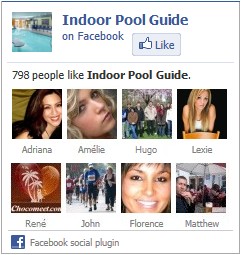
Overview
Good pool water management and adequate hygiene procedures will prevent pollution and cross-contamination in most cases. This article concentrates on cleanliness and hygiene in the pool surrounds and in the pool itself.
Public Education
Swimmers need to understand the importance to them of pre-swim hygiene; it helps provide more comfortable water. Posters, pool rule handouts and informal education all help to inform the public of their part in keeping the pool clean. However, if the toilet and shower facilities do not accommodate swimmer numbers, or they are inaccessible or dirty, no amount of education will encourage swimmers to use them.
Pool Users’ Personal Hygiene
The pre-swim shower will remove most potential contaminants—dead skin cells, fibres from clothes, dirt, body oils and sweat—before the swimmer enters the pool water.
There seems to be some sense in encouraging the pre-swim shower.
Footbaths were once considered invaluable for preventing contamination with tinea and plantar warts but this no longer appears to be the case. Showers clean the feet more effectively and bring extra benefits of rinsing the body at the same time.
Swim showers should be supplied with fresh water and run to waste.
The frequency of cleaning showers will depend on number of swimmers using them, but regular inspection and at least daily cleaning should be part of routine management.
Toilets
These need to be placed so they can be conveniently used prior to entering the pool. Public education is necessary, especially with children, to minimise involuntary urination in the pool. Babies should be in bathers rather than nappies, and be encouraged to empty bladders before entering the pool. Frequency of cleaning will depend on numbers attending, but toilets should be cleaned at least once daily, and more frequently in times of heavy use. Sanitary and nappy disposal units should be made available. Regular inspection should be part of routine management.
Hot Water Systems
Hot water systems serving showers and hand basins should deliver water at less than 43˚C to prevent scalding. The main boilers should be maintained at temperatures not below 60˚C to prevent the colonisation of Legionella bacteria. The temperature reduction required can be achieved by mixing valves. Tepid water systems or modified tepid water systems that maintain water below 50˚C must be maintained in accordance with the Standards prescribed by the Health (Infectious Diseases) Regulations to minimise colonisation by Legionella bacteria. Instantaneous hot water systems can be controlled to provide water at these ranges without the need for storage or mixing valves.
Cleaning in and Around the Pool and Changing Rooms
From a hygiene perspective to prevent transmission of infection, the pool surrounds and change rooms need to be cleaned regularly. Frequency will again depend on the number of swimmers attending but should be monitored and inspected as part of routine management. Minimising dirt from shoes can be controlled with good design. The use of cleaning agents needs to be strictly controlled and storage should comply with the Dangerous Goods.
Floors need to be hosed, mopped, washed or scrubbed at least once each day. Keeping cleaning products out of the pool water is almost impossible, particularly with wet-deck pool. For this reason, pool water can be used as the cleaning solution, as it already has a disinfectant in it. On the sides of the pool, deposits of dirt just above the water line can be cleaned off with a scourer, using sodium bicarbonate solution. Goggles and gloves should be worn. Tanks and channels should be inspected and cleaned periodically.
It is extremely important that commercial products used for cleaning in and around the pool area are compatible with pool water and chemicals used for disinfecting it. Care needs to be taken that cleaning chemicals do not affect residual levels or interfere with monitoring. Chlorine and pool chemicals interact with other chemicals in a way that can be hazardous. Care should be taken to avoid outright incompatibility between cleaning and pool chemicals—particularly potentially explosive reactions between acids and alkalis.
Bottom of Pool
There should be some method of cleaning debris and algae from the floor of the pool. The simplest method is to use a long-handled, wide, weighted brush and sweep the debris to the deepest outlet grating. Algae or staining requires suction to remove it. There are a number of suction vacuum units on the market that may require manual handling or may be remote controlled. Some will pump out through the pool’s filtering system; some have built-in filters that need cleaning after each use.
Emptying the Pool
Generally speaking the pool should not be emptied unless absolutely necessary, due to potential structural damage. Detailed information about this process is included in the chapter on ‘Maintenance’.
When emptied, the walls and floor can be assessed for cracked, broken or loose tiles or vinyl and these should be mended or replaced. The surfaces can then be cleaned with a chlorine-based disinfectant. Acid washing may be necessary to get the tiles clean—refer to the manufacturer’s advice as this can damage the grouting. In either case, the solution needs to be neutralised then rinsed to waste prior to the pool being refilled.

